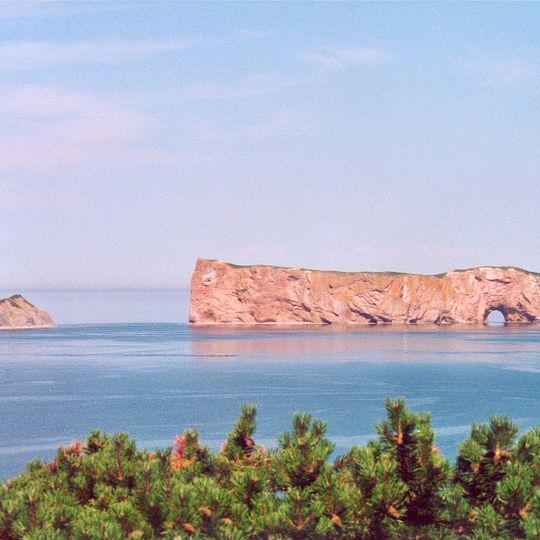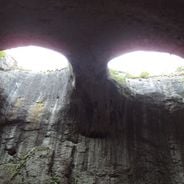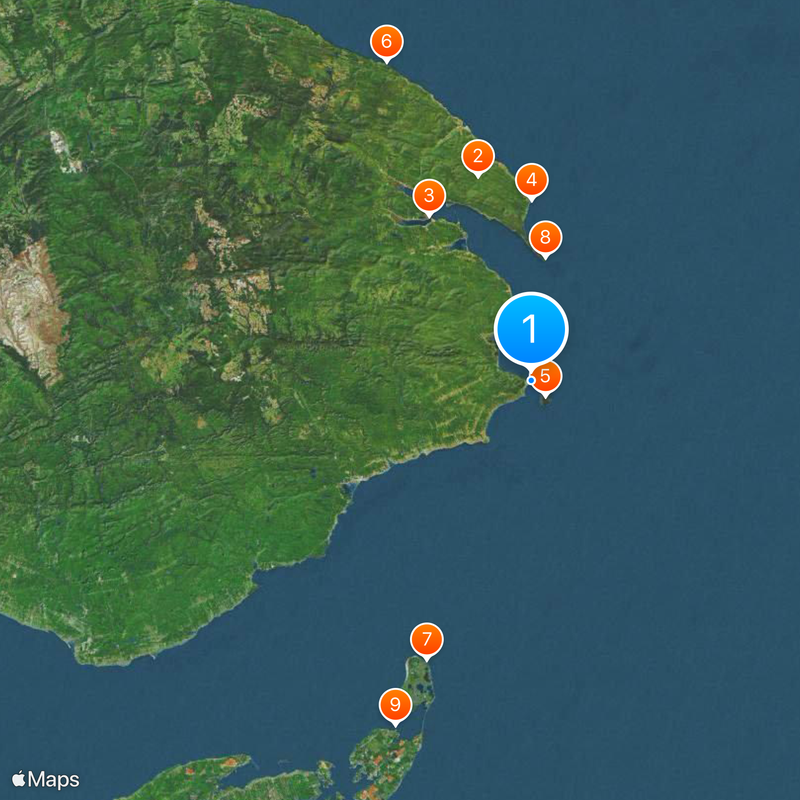Perce Rock, Natural arch in Gaspe Peninsula, Canada.
Percé Rock is a limestone formation in the Gulf of Saint Lawrence on the Gaspé Peninsula in Quebec. The structure rises roughly 90 meters above the water and stretches over 400 meters in length.
Jacques Cartier described three arches in the formation in 1534, two of which collapsed over the centuries. The remaining opening continues to shape the appearance of the island today.
The name refers to the opening that pierces through the stone and remains visible from shore. Local fishermen use the tidal rhythm around this formation to guide their journeys along the coast.
At low tide it is possible to walk out to the formation, but timing depends on water levels and weather conditions. Climbing on or entering the rock structure is not permitted.
The limestone holds remains of more than 150 different species from long-vanished seas. These inclusions offer insight into life from several hundred million years ago.
Location: Percé
Location: Quebec
Elevation above the sea: 88 m
GPS coordinates: 48.52389,-64.19944
Latest update: December 19, 2025 22:29
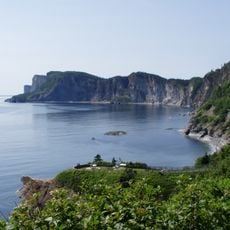
Forillon National Park
43.3 km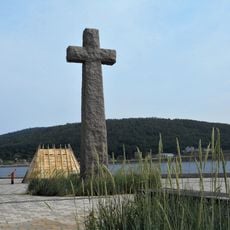
Cross of Gaspé
39.8 km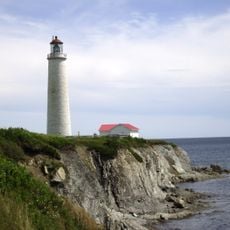
Cap-des-Rosiers Lighthouse
37 km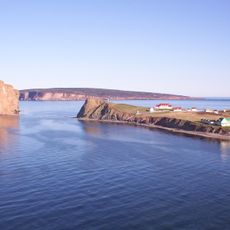
Île-Bonaventure-et-du-Rocher-Percé National Park
4.1 km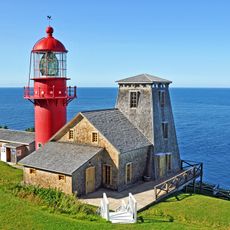
Pointe-à-la-Renommée Lighthouse
71.4 km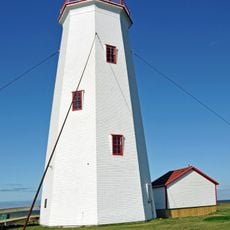
Miscou Island Lighthouse
61.3 km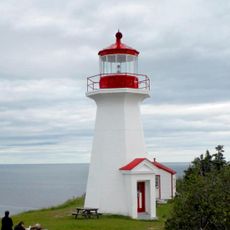
Cap Gaspé Lighthouse
25.4 km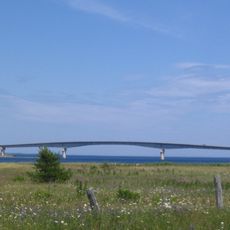
Miscou bridge
76.2 km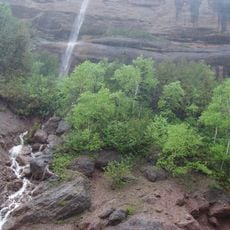
Mont Sainte-Anne
2.7 km
Église de L'Assomption-De-Notre-Dame de Grande-Rivière
26.2 km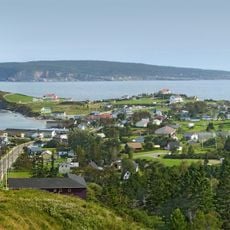
Percé Geopark
1.3 km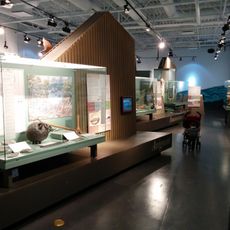
Gaspesie Museum
40.3 km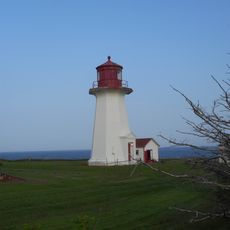
Cap d'Espoir Lighthouse
14.5 km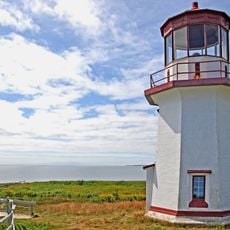
Cap-Blanc Lighthouse
2.8 km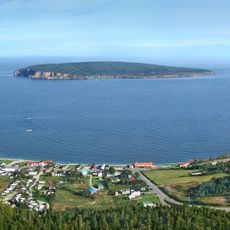
Site patrimonial de Percé
1.1 km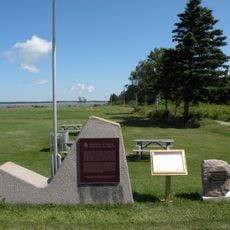
Denys Fort / Habitation
77.2 km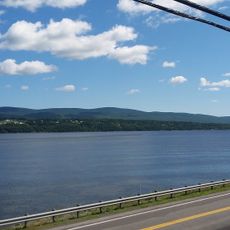
Gespeg Micmac interpretation site
46.6 km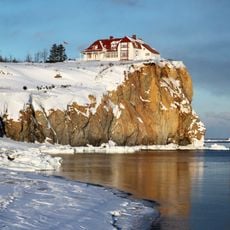
Villa Frederick-James
714 m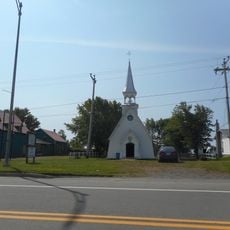
Église Saint-Phillip
61.1 km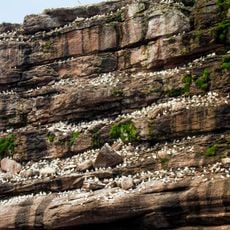
Bonaventure Island and Percé Rock Migratory Bird Sanctuary
4.1 km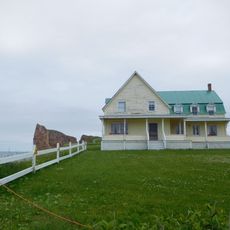
Biard house
808 m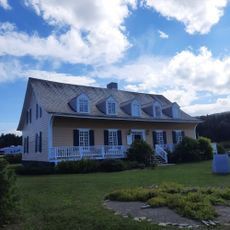
Manoir Le Boutillier
46.1 km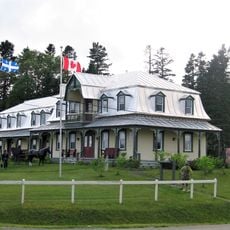
Site patrimonial de Port-Daniel
68.6 km
Xavier Blanchette House
29.3 km
Saint-Albert-le-Grand
40.1 km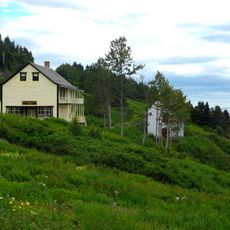
Hyman House and Store
29.8 km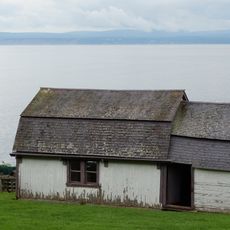
Xavier Blanchette Storage
29.3 km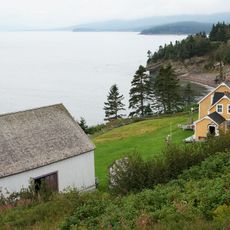
Xavier Blanchette Barn
29.3 kmReal people, real opinions — but not verified.
Visited this place? Tap the stars to rate it and share your experience / photos with the community! Try now! You can cancel it anytime.
A nice boat ride allows for a pleasant discovery of this rock.
Discover hidden gems everywhere you go!
From secret cafés to breathtaking viewpoints, skip the crowded tourist spots and find places that match your style. Our app makes it easy with voice search, smart filtering, route optimization, and insider tips from travelers worldwide. Download now for the complete mobile experience.

A unique approach to discovering new places❞
— Le Figaro
All the places worth exploring❞
— France Info
A tailor-made excursion in just a few clicks❞
— 20 Minutes
